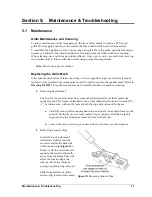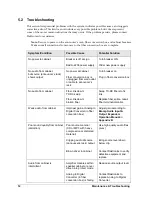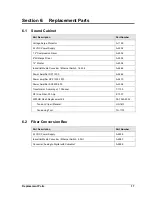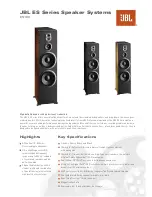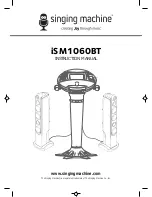
6
Mechanical Installation
Cables and chains attached to the eyebolts and directly to a center lifting point, as shown in
the right-hand example in
, can create a dangerous lateral force on the eyebolts and
may cause the eyebolts to fail. The smaller the angle between the cable and the top of the
cabinet, the lighter the sign must be to safely lift it. If this method must be used, ensure a
minimum angle between the chain and cabinet of at least 45°.
Do NOT attempt to lift the cabinet if the angle is less than
45 degrees. Exceeding load angles or weight limits could
cause the bolts in the cabinet to buckle, resulting in
serious damage to the equipment or injury to personnel.
Also, loads should be applied directly in the plane of the
eyebolt as shown in
Note:
Daktronics assumes no liability for damages
resulting from incorrect setup or lifting methods.
Eyebolts are intended for lifting only. Do not attempt
to permanently support the cabinet with the eyebolts
or eyebolt holes.
If installers remove the eyebolts, use
5
/
8
"
bolts to plug
the holes.
Mounting the Cabinet
The sound cabinet will be mounted atop a frame that must be certified by a structural
engineer. To mount the system in place, position the cabinet on the structure where it is to be
mounted. Weld the cabinet’s bottom members to the structure at the locations indicated on
the shop drawing. Refer to
Drawing C-330901
in
Appendix A
for mounting requirements.
Aiming the Speakers
Once the cabinet has been mounted in place, it may be necessary to adjust the direction of the
speakers based on the specific facility.
Drawing C-1023805
in
Appendix A
provides speaker
aiming instructions as well as recommended angles to position the speakers, based on the
cabinet’s location in relation to the seating area(s).
Figure 9:
Lifting Methods
Figure 10:
Eyebolt Plane Load

















